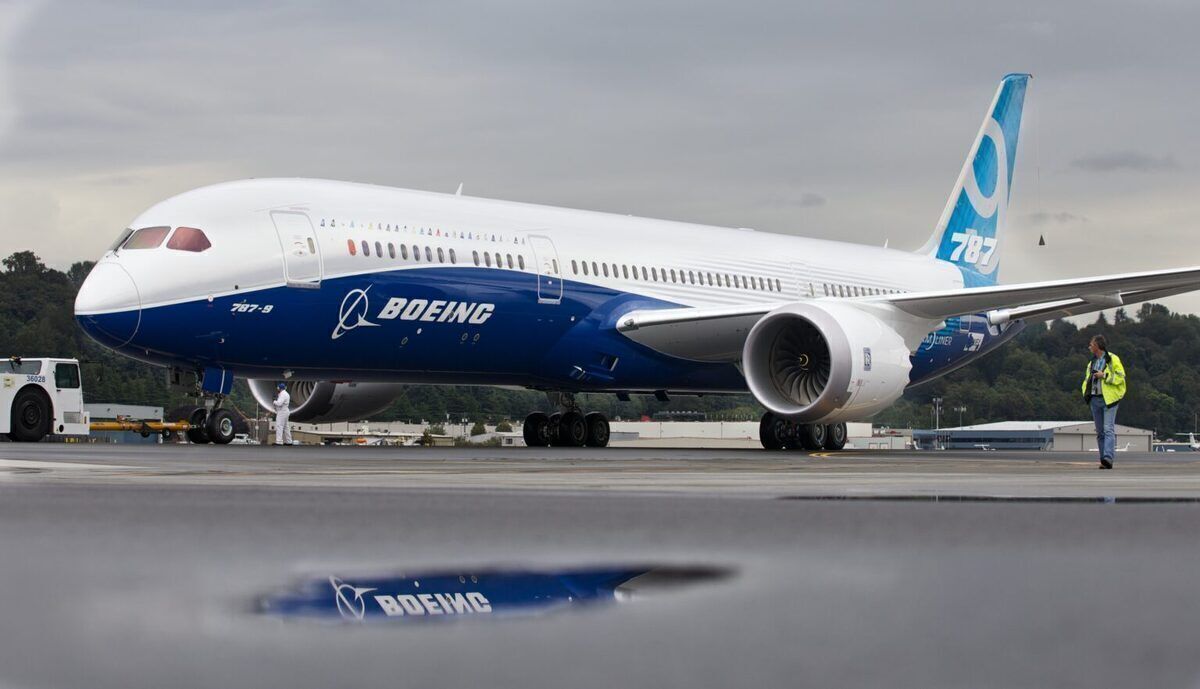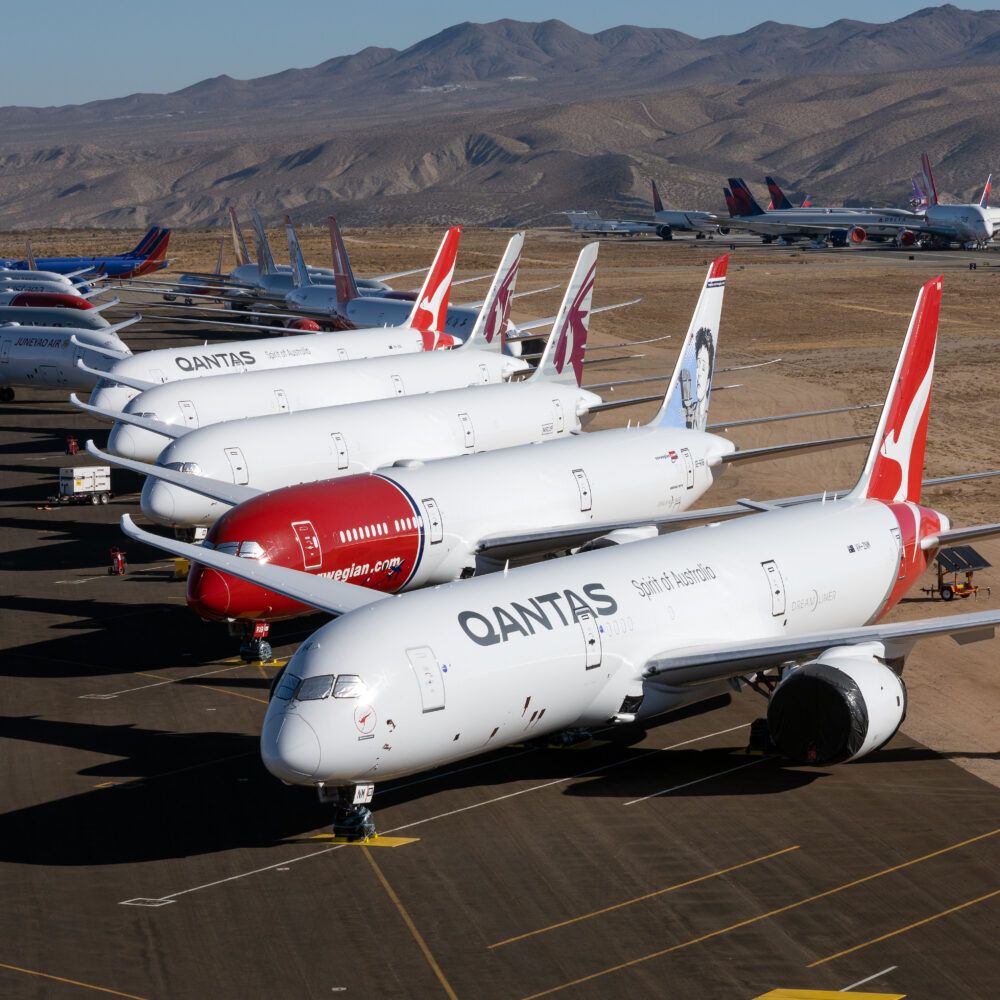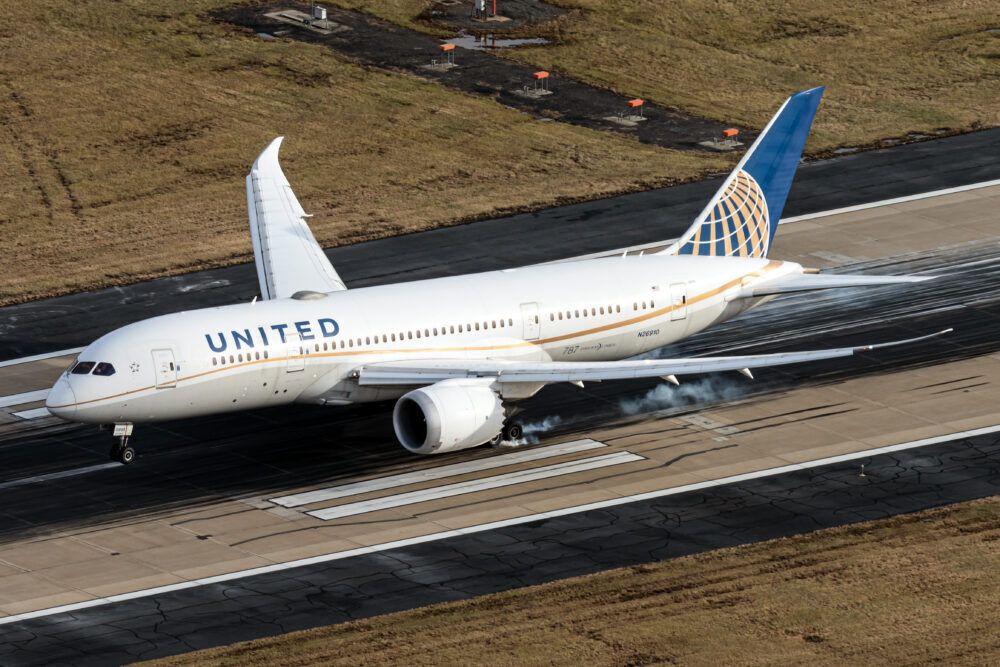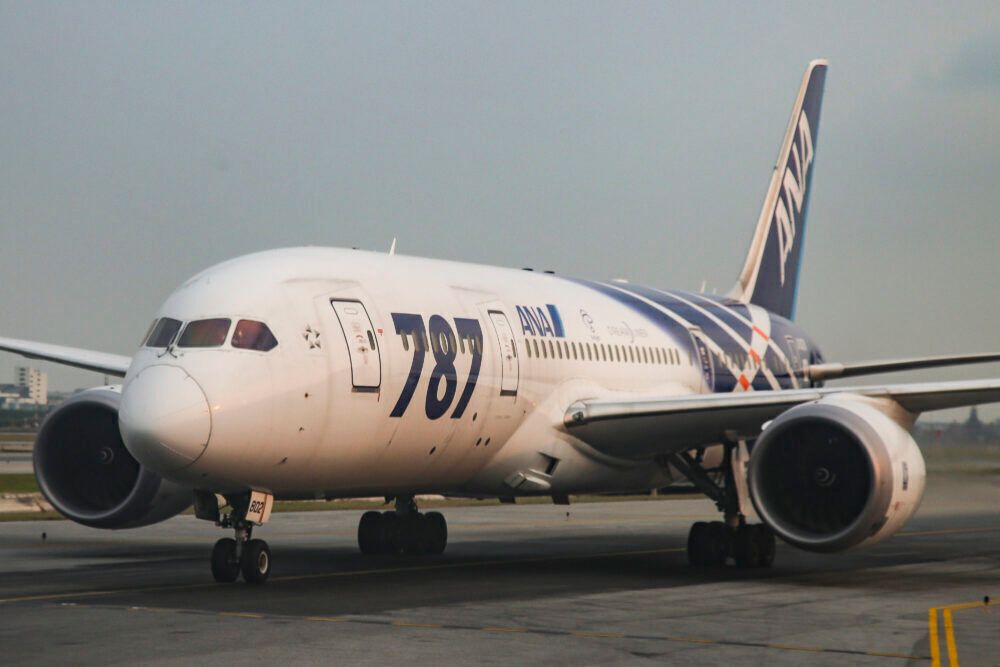Boeing’s upbeat earnings result today was slightly marred by the ongoing issues with the 787 Dreamliner. As it works to resolve all the production problems identified on its undelivered aircraft, the manufacturer will maintain a production rate of fewer than five Dreamliners a month. It expects to deliver less than half of its parked inventory this year.
Less than half of Dreamliners will be delivered this year
Boeing has slipped in a small profit in the most recent quarter, buoyed by an uptick in deliveries of its 737 MAX aircraft. However, the manufacturer is still dealing with headaches on the widebody side, with new issues affecting its ability to deliver the 787 Dreamliner.
In its earnings statement today, Boeing said,
“As Boeing has previously shared, the company is conducting inspections and rework and continues to engage in detailed discussions with the FAA on verification methodology for 787. In connection with these efforts, the company announced earlier this month that it has identified additional rework that will be required on undelivered 787s.
“Based on our assessment of the time required to complete this work, Boeing is reprioritizing production resources for a few weeks to support the inspection and rework. As that work is performed, the 787 production rate will temporarily be lower than five per month and will gradually return to that rate. Boeing expects to deliver fewer than half of the 787s currently in inventory this year.”
Previously Boeing had targeted getting the majority of the 100 or so 787s currently in its inventory delivered to customers by the end of this year. The reduced rate of deliveries now could see it entering 2022 with more than 50 Dreamliners still stored on site. The move to maintain a lower production rate will also be unwelcomed by its supply chain.
Stay informed: Sign up for our daily and weekly aviation news digests.
Timeline of the Dreamliner issues
The Dreamliner is a groundbreaking plane on many levels, not least in the way it is built. Because the Dreamliner is a very different structure to any other aircraft that came before it, being largely made from composites, the way it performs and ages over time is a learning curve for both the manufacturer and the FAA.
Nearly a decade after its entry into service, in August 2020, Boeing voluntarily grounded eight Dreamliners which were found with two separate production defects in the same place. Subsequently, the FAA launched an investigation into what it called ‘nonconforming sections of the rear fuselage.’
The two defects under investigation were the way that Boeing used ‘shims’ to fill tiny gaps between sections, and also the overall smoothness of the fuselage skin. Although the issues were not considered to be critical to the safety of the 787, there were concerns that, when both were present, extreme circumstances could lead to a problem with structural integrity.
But that initial investigation opened something of a can of worms, as more and more issues have been thrown up over the subsequent months. Just days later, Boeing flagged a new issue, this time relating to the tail of the plane, caused by sections being improperly clamped together during construction.
In October, Boeing completely stopped delivering Dreamliners. This was a major decision to take, given that at the time, the company could not deliver its narrowbody 737 MAX either. But Boeing was clearly keen to get things right and was proceeding with in-depth inspections of its 787s. In December, it identified the same smoothness problem in other areas of the plane.
Clearly, this was not an issue that was going away fast. In March this year, the FAA took over the final inspection and signing off on 787 before deliveries. Nevertheless, by the end of the month, Boeing had restarted deliveries of its widebody jet. At the time, Boeing said it hoped to deliver the majority of the 100 or so 787s it had in its stored inventory by the end of the year.
But, in May, deliveries were halted once more. The FAA was requesting more information on how Boeing was finding and dealing with the defects before handing planes over to customers. And in July, Boeing found yet another defect with the Dreamliner. The problem was in the forward pressure bulkhead. At the time, Boeing expected it to take around three weeks to resolve the issue.
While these issues are undoubtedly bad press for Boeing, the manufacturer is striving to solve its issues once and for all. Back in April, Boeing CEO David Calhoun noted that the company was taking “really hard actions … to stop things when we see an issue and get them fixed once and for all.” And that, in the long run, is good for everyone.




